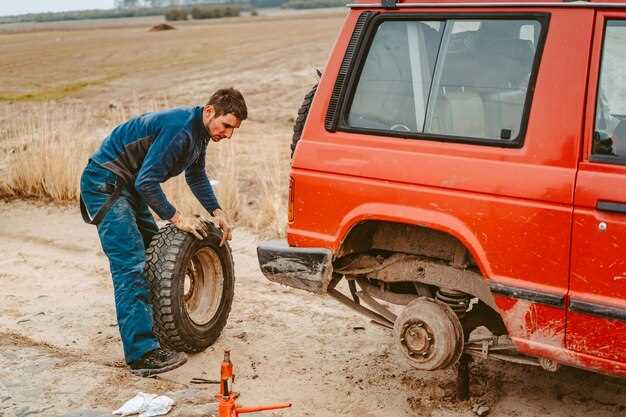
For off-road enthusiasts looking to enhance their truck’s capabilities, lifting is a critical modification that can dramatically improve performance. By increasing the ground clearance of your vehicle, you not only gain the ability to navigate rough terrains but also reduce the risk of damage to the undercarriage. This elevation allows for larger tires, which provide better traction and stability on challenging surfaces, making your truck more adept at handling obstacles such as rocks, mud, and steep inclines.
Lifting your truck does more than just boost aesthetics; it fundamentally alters the vehicle’s center of gravity and approach angles. A higher stance leads to improved visibility and maneuverability, giving drivers a strategic advantage in off-road conditions. However, it is essential to understand the different types of lifting kits available and how each option can affect performance and handling. From body lifts to suspension lifts, each choice comes with its own set of benefits and considerations.
In this article, we will explore the various aspects of lifting your truck for off-road performance, including the benefits, types of lifts, and practical tips for installation. Whether you’re a seasoned driver or a newcomer to off-roading, understanding how lifting can transform your truck will empower you to make informed decisions and elevate your off-road adventures to new heights.
Choosing the Right Lift Kit for Your Truck Model

Selecting the appropriate lift kit for your truck involves several critical considerations to ensure optimal off-road performance. Begin by identifying your truck’s make and model, as each manufacturer often has specific compatibility guidelines. Lift kits are typically designed for particular vehicle designs, so an ill-fitting kit can lead to performance issues.
Next, decide on the desired lift height. Common options range from 2 to 6 inches or more, depending on your off-road needs. A higher lift can provide greater ground clearance, essential for navigating rugged terrains, but it may also affect the vehicle’s center of gravity. Balance your lift height with stability to maintain safety during operation.
Consider your primary off-road activities. Different lift kits offer various advantages based on whether you plan to tackle rocky trails, sandy dunes, or mud. For instance, a suspension lift kit can improve articulation and flexibility, while a body lift may enhance tire clearance without altering suspension geometry.
Evaluate the materials and components of the lift kit. Quality kits utilize durable materials such as high-strength steel and include components that enhance the truck’s overall performance. Look for reputable brands that provide warranty options, as this reflects their commitment to quality.
Finally, read reviews and gather feedback from other truck owners who have installed similar lift kits. Real-world experiences can provide insights into installation challenges, performance enhancements, and long-term durability. Consulting with professionals or off-road experts can also guide your decision, ensuring you choose a lift kit that meets your specific requirements and enhances your truck’s off-road capabilities.
Adjusting Suspension for Optimal Off-Road Stability

When enhancing your truck’s off-road capabilities, adjusting the suspension system is crucial for achieving optimal stability on rough terrains. A well-tuned suspension helps maintain tire contact with the ground, improving traction and control.
Start by selecting appropriate shock absorbers that match your off-road needs. Heavy-duty shocks designed for off-road performance can better absorb impacts and reduce bounce, allowing for smoother rides over rough surfaces.
Next, consider adjusting the spring rates. Choosing stiffer springs can improve load-carrying capacity, while softer springs enhance comfort during articulation. It’s essential to find a balance that suits your driving style and the type of terrain you navigate.
Additionally, modifying the ride height by lifting your truck can significantly affect suspension geometry. A lift increases ground clearance, allowing you to tackle obstacles more effectively. However, it’s vital to adjust the alignment after such modifications to ensure proper steering response and tire wear.
Utilizing sway bar disconnects can enhance off-road performance by allowing for greater wheel articulation. This adjustment enables each wheel to move freely over uneven surfaces, increasing stability and grip when traversing rocky or rutted trails.
Lastly, regularly inspect and maintain your suspension components. Off-road conditions can lead to wear and tear, so checking for damage and replacing worn parts will ensure optimal performance and safety on your adventures.
Enhancing Tire Selection for Performance in Rugged Terrain
Choosing the right tires is crucial for maximizing your truck’s off-road capabilities. Tires designed for rugged terrain differ significantly from standard road tires, offering enhanced traction, durability, and versatility. The first factor to consider is tread pattern. Aggressive, deep treads provide better grip in loose surfaces like mud, sand, or gravel. Look for tires with larger voids to allow for efficient self-cleaning, preventing mud from clogging the tread.
Tire width also plays a vital role. Wider tires distribute the weight of the vehicle over a larger surface area, reducing ground pressure and improving flotation on soft terrain. However, too wide of a tire can impact steering responsiveness and cause increased wear on components. Finding the right balance between width and performance is essential.
Consider the rubber compound used in tire construction. Softer compounds offer greater traction but may wear out faster on hard surfaces. For off-road adventures, a medium compound is often preferred, providing a good mix of durability and grip. Additionally, pay attention to the sidewall strength. Reinforced sidewalls can withstand impacts from rocks and debris, reducing the risk of punctures during off-road excursions.
Don’t forget about tire pressure. For varying terrains, adjusting the tire pressure can enhance performance. Lowering the pressure increases the tire’s footprint, improving traction on soft ground, while higher pressure is beneficial for rocky trails to prevent sidewall punctures.
Finally, consider the tire rating and load capacity. Ensure that the tires are rated for your vehicle’s weight and intended use. Overloading tires can lead to blowouts and decreases in performance. Proper selection of off-road tires tailored to your truck and driving conditions can dramatically improve performance, making your off-road adventures more enjoyable and safe.





